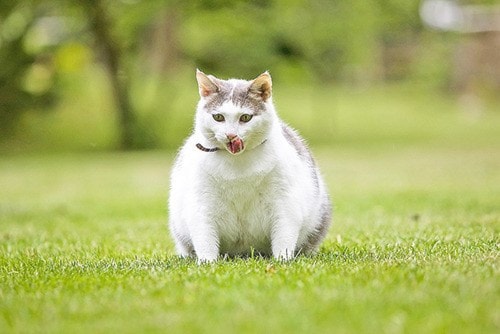Pet obesity is on the rise and there are many contributing factors to the modern day occurrence according to Hope veterinarian Dr. Laura Madsen of Coquihalla Veterinary Services. Overfeeding and decreased exercise are the biggest contributors to the epidemic.
“Basically, it's calories in versus calories expended — it's very common, as people have a lifestyle where they live indoors, and pets are only going for one or two walks a day,” said Madsen. “Dogs and cats used to live on farms, so they would traditionally exercise all day long and have different tasks (in the case of the dogs) like guarding, or herding that would keep them fit.”
Certain types of breeds were originally developed to do a specific job, but they're increasingly turning into house dogs and getting away from those tasks, all of which contribute to expanding waistlines, mobility issues, and yes, even shortening of life spans.
As for indoor cats — they often don't get much exercise at all, unless the owner takes care to ensure that certain rigs are in place to allow the animal to chase and hunt within the home and in a solitary environment, when no one else is around.
“We're seeing a high trend in cat diabetes — we would really like to see people building a cat run outside with things for them to climb up on and chase,” said Madsen.
Mobility is everything in preventative medicine and Madsen suggests getting a second cat, so they can chase each other around the house for some good wholesome exercise.
“It's really hard for the indoor cats, and it seems the trend right now for both cats and dogs is feeding them less than the recommended amount listed on the bag.”
According to Madsen, modern grain free diets are promoting higher protein and a denser product. Animals are then being fed the same amount they would need if they were extremely active, promoting weight gain and problems like flatulence and indigestion. By decreasing the recommended amount on the bag, the animal is getting the required nutrition for the energy being expended.
There are major side effects to pet obesity including diabetes, arthritis, and decreased longevity.
“Instead of having an animal that's mobile, people have an animal that's having trouble moving around, so that animal has to get put down because they can't walk well enough to go to the bathroom because they're too fat, and they can't pull themselves up,” Madsen told The Hope Standard.
It's normal for an animal to have a little arthritis, but depending on how much the animal weighs, it will affect how that animal can function.
“Sometimes ear dribbling is related to having a lot of fat around the tissue. Skin conditions are related to not being able to self clean properly because of folds and rolls that get in the way, preventing animals from reaching certain areas.”
There are some interesting ways concerned pet owners can get their animal to lose weight, including using computer programs. A pet's proportions can be put into a calculation that figures out based on the breed and size, how many calories are needed per day to reach their ideal weight.
Owners can also make sure that food being fed to their pet is filling enough, which will prevent hunger cries after feeding.
A couple of diets formulated for weight loss are recommended by Madsen. One is Royal Canin Satiety Support, which helps animals feel full so they don’t beg as much. Another is Hill’s Prescription Diet Metabolic, which is formulated to change gene expression to increase metabolism.
Each of these diets also has the online program mentioned above.
“Ideally we check the pet’s weight once a month to assess their progress and re-calculate their daily food requirement — often, if people cut back on their regular food the pet feels hungry, and can be deprived of nutrients.”
Making sure the animal has plenty of water is also beneficial to promoting weight loss, because it increases the feeling of fullness, along with watching high caloric treats that often get sneaked into a pet's diet (like a piece of cheese.)
“Statistics show that a fat dog will typically live a year shorter than a normal dog, and if you count how many years a dog will typically live, it's pretty significant,” said Madsen.
The best way to keep pets in a healthy weight category is to weigh them frequently.
“It's hard to tell if they've gained weight when you're seeing them every day — it's also hard to tell when they have long fur, so it's important to keep up with the check ups once a year. People are welcome to come and use the scales whenever they want.”
Prevention is the best strategy to maintain pet health according to Madsen.
“Keeping the situation in check and taking care of problems early will prevent them from escalating. It's all about promoting a healthy lifestyle.
